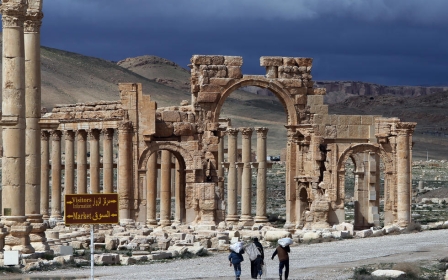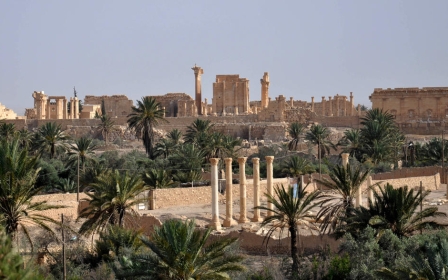IS enters Palmyra museum: Syria antiquities chief

Islamic State group fighters have entered the museum in the ancient Syrian city of Palmyra, placing guards at its doors, the country's antiquities director Mamoun Abdulkarim said on Saturday.
He also confirmed that the militant group had raised their flag over the ancient citadel that overlooks some of the spectacular Greco-Roman ruins in the city.
Speaking at a press conference in Damascus, Abdulkarim said some modern plaster statues in the museum had been destroyed but he did not report any damage to antiquities in the building.
IS on Thursday "entered the museum and broke some plaster statues... that were being used to represent life in prehistoric eras."
They returned on Friday, and when they left, "they closed the doors behind them and placed their guards" at the entrance of the museum, Abdulkarim said, citing residents still in the town.
Most of the antiquities in the museum were removed and brought to Damascus before IS cemented its control of Palmyra on Thursday.
"There's almost nothing left in the museum, we had been progressively transferring the antiquities to Damascus," he told AFP after the press conference.
"But there are still the large items, like the sarcophagi, which weigh three or four tonnes and we could not move, those are what worry me."
The Roman-Byzantine sarcophagi feature high-relief carvings.
Abdulkarim also confirmed that IS fighters had raised their black flag over the 13th century Mamluk Fakhr al-Din al-Maani citadel that overlooks the ruins of Palmyra.
Earlier, a photograph purporting to show the IS flag over the citadel was circulated on social media, but it was not possible to confirm its authenticity.
Both the citadel and the ruins are on the UNESCO World Heritage list, and before the war some 150,000 tourists a year visited Palmyra.
"There has been no movement (of IS) in the archaeological site," Abdulkarim said, referring to the main ruins in the city, including its famed colonnaded streets and extensive necropolis.
The arrival of IS in Palmyra has caused international concern about the fate of the city's historical treasures, because the group has destroyed heritage sites in areas under its control in neighbouring Iraq.
"I hope that they do not repeat the same destruction they committed in Iraq," Abdulkarim said.
"We will consider measures to prevent them from destroying Syrian cultural heritage."
New MEE newsletter: Jerusalem Dispatch
Sign up to get the latest insights and analysis on Israel-Palestine, alongside Turkey Unpacked and other MEE newsletters
Middle East Eye delivers independent and unrivalled coverage and analysis of the Middle East, North Africa and beyond. To learn more about republishing this content and the associated fees, please fill out this form. More about MEE can be found here.




